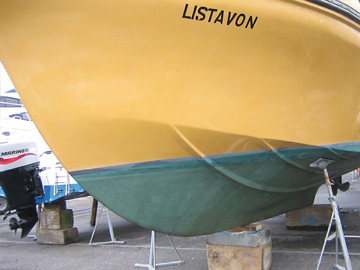On immersion sea water attacks the exposed pure copper powder, causing the formation of cuprous oxide. This highly effective antifouling agent deters growth until the surface degrades further to become cupric hydrochloride. This final copper form is highly unstable, and is washed away by the movement of the yacht, thereby removing any accumulating silt or slime. This automatically reveals a fresh copper rich surface, whereby the process recommences.
With an average thickness of at least 200 microns of Coppercoat being applied in a treatment, and a typical corrosion rate of 5 microns per year, it is easy to appreciate how this coating offers such long lasting and effective protection.
Furthermore, the inherent waterproofing qualities of the epoxy ensure that a treatment of Coppercoat will help prevent osmosis in GRP craft and offer extra protection against corrosion in steel vessels.
With the resin carrier insulating each copper particle, the final coating is inert and non conductive. Consequently Coppercoat does not cause electroloysis problems or cathodic decay in steel or aluminium craft. Sacrificial anodes should be fitted in the usual manner.



